Indice dei contenuti:
- Introduzione
- How fairs in Mexico usually work
- Day of the Dead and autumn fairs
- State fairs and big regional celebrations
- Music, food, and culture: festivals for every taste
- Sports and adrenaline events
- Books, cinema, light, and fireworks
- Mexico City and central region
- Carnivals in Mexico City and carnivals near Mexico City
- Guadalajara and western Mexico
- Gulf, Caribbean, and south: fairs in Mexico with sea and jungle
- How to use this guide to plan your trip
- Conclusione
- Video informativo
Introduction: Why fairs in Mexico are so special
When people talk about travel to Mexico, they often think first about beaches or ruins. But there is another side that many travelers do not know well: the huge calendar of fairs in Mexico, festivals, carnivals, and local festivities that fill the year. These events in Mexico mix food, music, religion, sport, and daily life. Going to them is one of the best answers to the question “what is there to do in Mexico City and other big cities?”
In this guide we will look at many important events in Mexico that take place mainly in October and November. This is a very busy time of the year, with Day of the Dead celebrations, state fairs, jazz festivals, book fairs, races, triathlons, food festivals, and more. We will also talk about carnivals in Mexico City, carnivals near Mexico City, and smaller local festivals like fiestas patronales in neighborhoods and small towns. The idea is to give you a clear picture of the most popular events in Mexico and also some less famous ones that feel very authentic.
You can read this guide as a simple introduction to cultural travel. You can also use it as a base to plan future tours or packages around fairs in Mexico. For each region we will explain what the event is about, where it takes place, what kind of experience you can expect, and how you can combine it with nearby attractions.
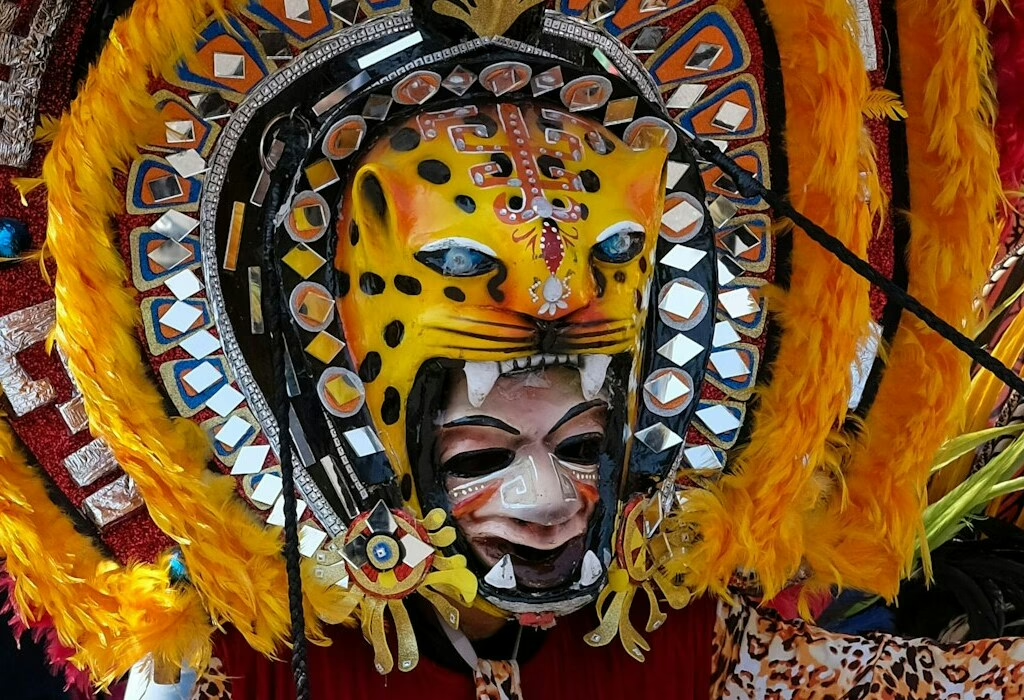
How fairs in Mexico usually work
Fairs in Mexico are not all the same. Some are huge, with thousands of visitors every day, big concerts, and a long program of shows. Others are small local festivals where neighbors come together, cook typical dishes, dance, and honor a saint or local tradition. Still, there are some common elements:
• Most fairs and local festivals have live music, usually regional styles like mariachi, banda, marimba, or son.
• There is almost always street food or food stands, so you can try tacos, tamales, mole, sweets, and drinks.
• Many events in Mexico mix religious and cultural elements. There can be a mass in the church, followed by a procession, followed by fireworks and a market.
• Seasonal fairs focus on one product or theme, such as chocolate, cheese, wine, or Christmas ornaments.
The season from late October to late November is one of the richest moments to enjoy these experiences. The weather is usually pleasant in many regions, and the Day of the Dead period gives a special tone to many important events in Mexico. In this period you can see parades with giant skulls, light festivals in cemeteries, traditional dances, and markets full of flowers and candles. At the same time, you can attend international events like Formula 1 in Mexico City, the Corona Capital music festival, the International Balloon Festival in León, or the Guadalajara Book Fair.
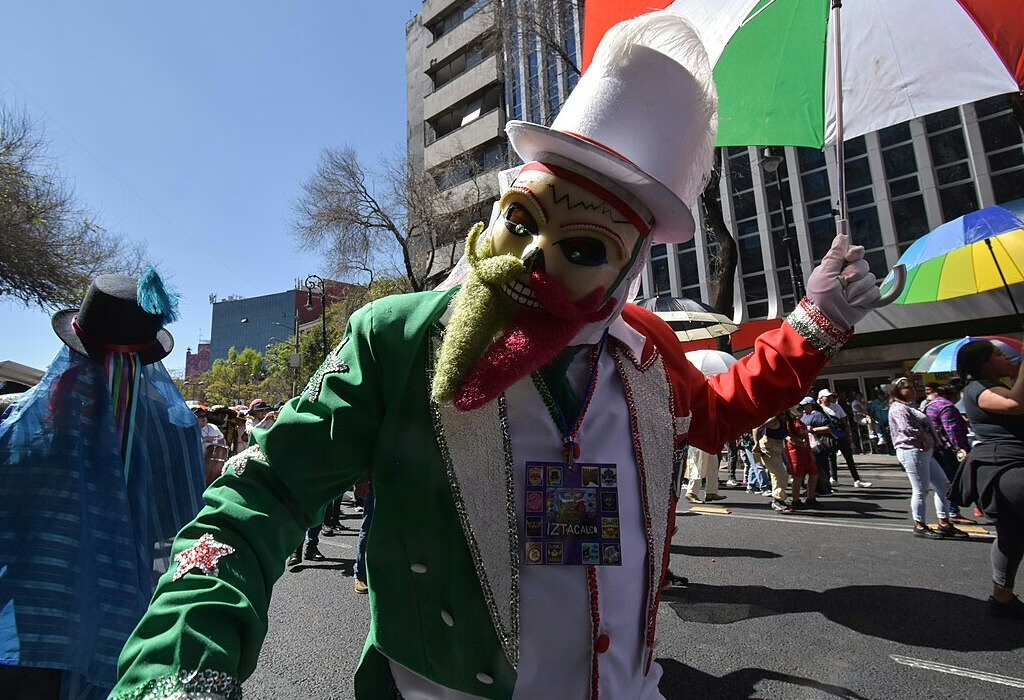
Day of the Dead and autumn fairs
Many fairs in Mexico during October and November have a strong connection with Il giorno dei morti. The best known is maybe the big parade in Mexico City, the Desfile Día de Muertos. It usually takes place at the end of October and moves through the main avenues of the city. Here you can see floats with catrinas, giant skeletons, dancers, and musica tradizionale. For travelers who wonder what is there to do in Mexico City in late October, this parade is high on the list.
Aguascalientes
You find the Festival Cultural de Calaveras. With more than thirty years of history, this event mixes shows, exhibitions, and activities that honor the dead and celebrate life. There are skull decorations, concerts, cultural events, and a strong family atmosphere.
Chignahuapan, Puebla
The Festival de la Luz y de la Vida lights up the town. The focus is on a ceremony around a lake with torches and music. It is a more intimate experience, very connected to the local community. Around the same time, Chignahuapan also hosts the Feria Nacional del Árbol y la Esfera, a fair dedicated to Christmas trees and glass ornaments, which makes the town famous in Mexico.

In Zacatlán, Puebla,
The Feria de los Muertos and the Festival de la Sidra y el Queso connect Day of the Dead traditions with local products such as cider and cheese. Visitors can walk through decorated streets, see altars, and taste regional food and drinks.
Valle de Bravo in the State of Mexico (Estado de México)
It holds the Festival de las Almas. It is a cultural festival with music, theater, and artistic events that celebrate the five ethnic groups of the region. For people staying in Mexico City, this can be combined with a weekend trip to the lake and the forest.
On the Caribbean coast, in Playa del Carmen
The Festival de Tradiciones de Vida y Muerte takes place in the Xcaret park. It is a large event with shows, concerts, altars, and exhibitions from many states of Mexico. Travelers who already plan to visit the Riviera Maya can add this to their list of popular events in Mexico.
Finally, in Guadalajara
There is Calaverandia, a theme park dedicated to Day of the Dead. This park uses light, music, and installations to create a night experience centered on skulls, altars, and Mexican folklore. It is a good example of how events in Guadalajara Mexico can mix tradition and modern entertainment.

State fairs and big regional celebrations
Besides Day of the Dead events, autumn is full of state and regional fairs in Mexico. These usually run for several weeks and include concerts, rides, livestock shows, markets, and cultural activities.
One of the classic ones is Feria Tlaxcala 2026, the regional fair of Tlaxcala
It runs during October and November and brings together food stands, games, music, and exhibitions that show local culture. Another example is the Feria Ganadera de Querétaro, one of the most important livestock fairs in the country. It also has concerts and family activities and takes place in November.
In Mérida
The Feria Yucatán Xmatkuil is one of the largest popular events in Mexico’s southeast. It combines rides, shows, food, and displays of local products. For travelers visiting Mérida or the nearby archaeological sites, this fair shows another side of the region.
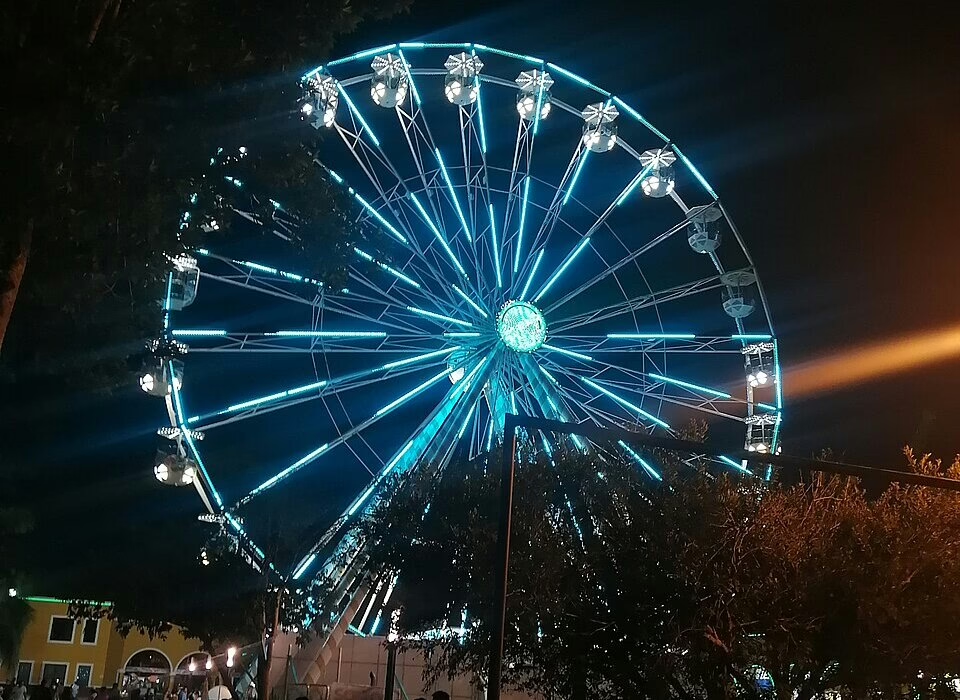
Toluca is famous for the Feria del Alfeñique
A fair of sugar skulls and sweets related to Day of the Dead. The streets near the main square fill with stands selling candy in many shapes and colors. It is a perfect place to feel local festivities and buy traditional items.
Chignahuapan
As mentioned before, has the Feria Nacional del Árbol y la Esfera, where artisans sell Christmas trees and especially glass spheres of many designs. In Tlalpujahua, Michoacán, there is a similar event: the Feria de la Esfera. Together, these fairs in Mexico are ideal for travelers who love Christmas decorations and want to see how they are made.
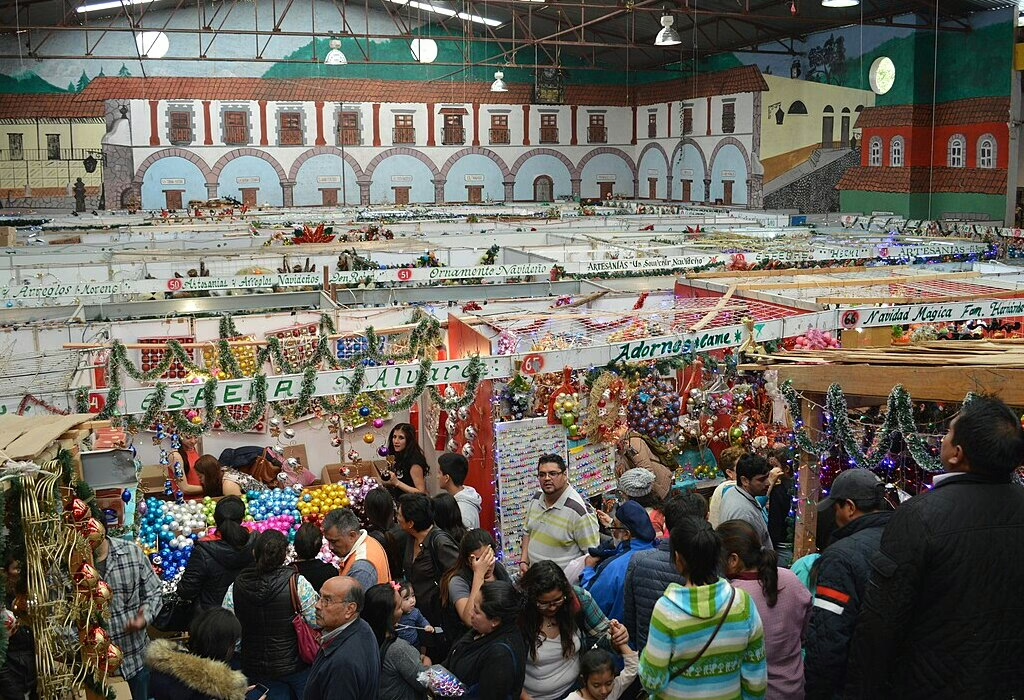
León
In the state of Guanajuato, hosts the Festival Internacional del Globo, a hot-air balloon festival. Balloons take off early in the morning, and there are night shows with illuminated balloons. It is one of the most picturesque events in Mexico and attracts both locals and visitors from other countries.
In the north, Ensenada hosts the Baja 1000 Score Internacional
A famous off-road race across the desert of Baja California. While it is more of a sport event, it also feels like a big fair, with teams, fans, and many activities around the race.

Music, food, and culture: festivals for every taste
Many fairs in Mexico are dedicated to music and food. These events give clear examples of how diverse the country’s cultural life is.
For music lovers, the Corona Capital in Mexico City is a huge rock and pop festival
It usually takes place in mid November and brings international bands and thousands of fans. For people asking what is there to do in Mexico City during that time, this is often one of the main answers, especially for a younger crowd.
In Morelia
The Festival de Música de Morelia presents concerts of classical and contemporary music. The city’s colonial buildings become stages for orchestras and small groups. This can be a very interesting stop for travelers moving through the colonial cities of central Mexico.
San Miguel de Allende hosts the Festival Internacional de Jazz y Blues
One of the most respected jazz events in Mexico. Musicians from Mexico and abroad play in theaters and open-air venues. Near the same region, the Riviera Maya Jazz Festival in Playa del Carmen brings jazz to the beach, with free concerts usually at the end of November.
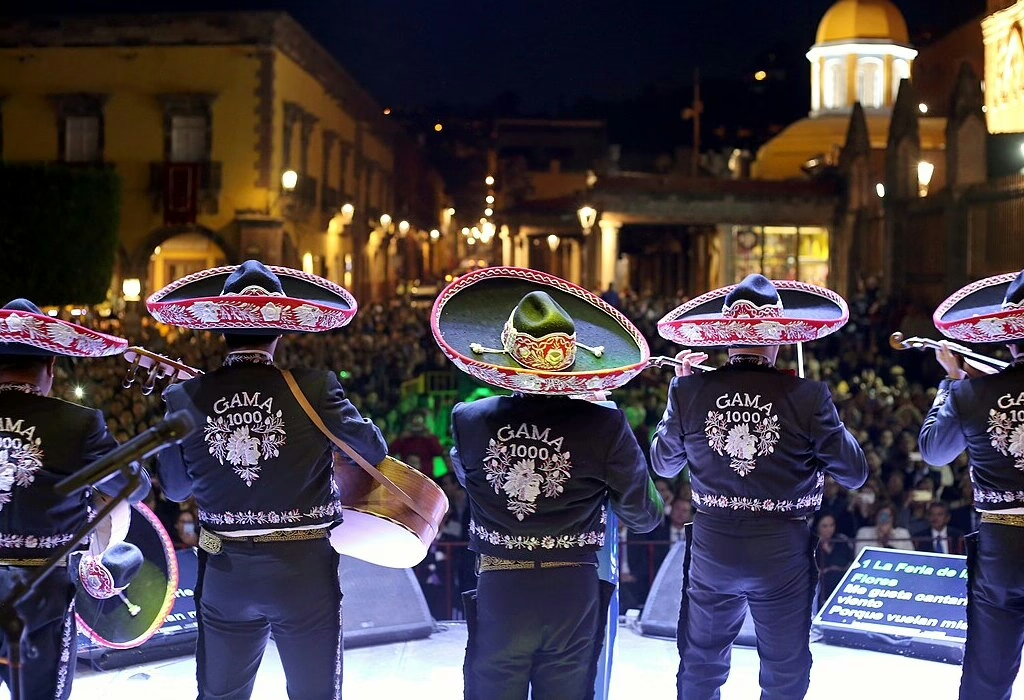
Food festivals also form a big part of the most popular events in Mexico. In Puerto Vallarta
The Festival Gourmet Internacional gathers chefs from Mexico and other countries. For ten days visitors can try special menus in many restaurants.
In Villahermosa, Tabasco
The Festival del Chocolate celebrates cocoa and chocolate, an important product of the region. There are tastings, workshops, and stands selling sweets and drinks. In Zacatlán, the already mentioned Festival de la Sidra y el Queso focuses on cider and cheese. Also, in San Felipe, Baja California, the Festival del Camarón centers on shrimp and seafood, with cooking contests and tastings.
A Guanajuato
The event called Catando México brings together wineries from different parts of the country. It is a good chance to learn about Mexican wine. The Festival Cultural Mole de Caderas in Tehuacán, Puebla, focuses on a regional dish made with goat meat and a special sauce, connecting gastronomy with local identity.
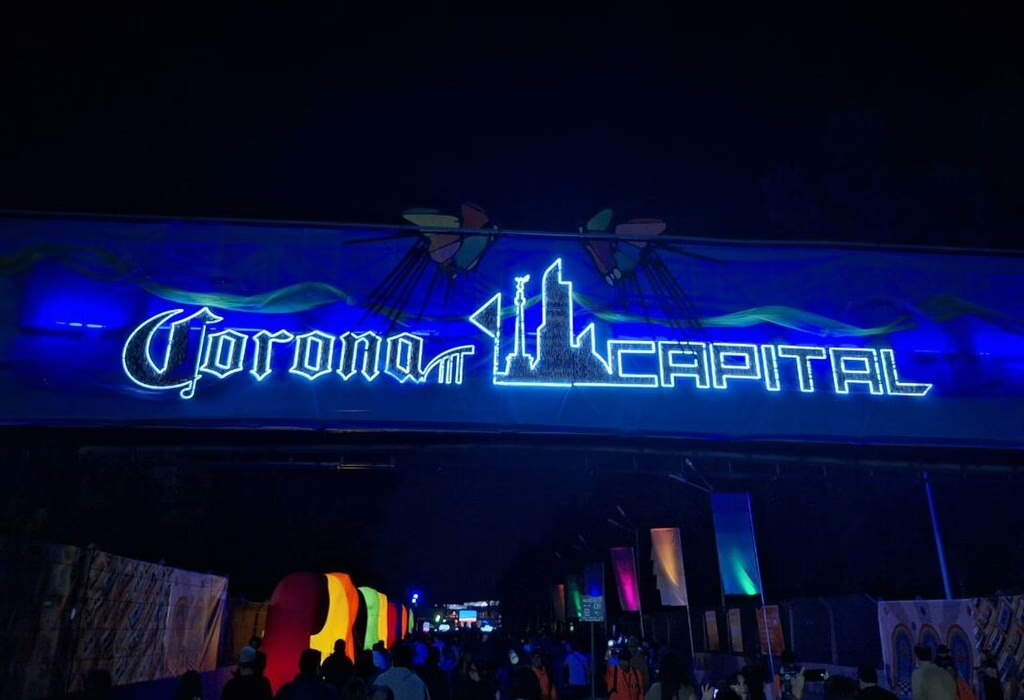
Sports and adrenaline events
Not all fairs in Mexico are about food and music. Some of the most important events in Mexico have a strong sports focus. In Mexico City, the Formula 1 Gran Premio de México is one of the biggest international events in the country. It brings fans from all over the world and turns the city into a big party for a full weekend at the end of October or early November.
Also in the sports area, Ironman Cozumel is a major triathlon in the Caribbean. Athletes swim in the sea, cycle around the island, and run through the town. The Triatlón Xel-Há near Cancún is another big race, with swimming in a natural inlet and cycling and running through jungle paths. In Mazatlán, the Gran Maratón Pacífico mixes a marathon and a triathlon and is known for its lively atmosphere and views of the Pacific Ocean. Runners and visitors can also enjoy the beach and seafood.
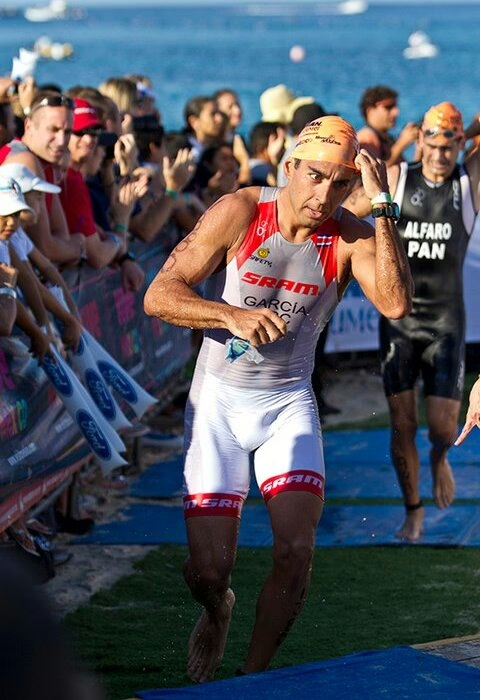
In Puerto Escondido, the Torneo Internacional del Pez Vela is an international sailfish tournament. Anglers compete to catch the biggest fish, while families and friends enjoy the beach and the November Fiestas de Puerto Escondido, a full month of activities that includes the sports event. These sport-based events in Mexico are perfect for travelers who like active holidays and want a goal for their trip, for example to run a race or watch a Formula 1 Grand Prix.
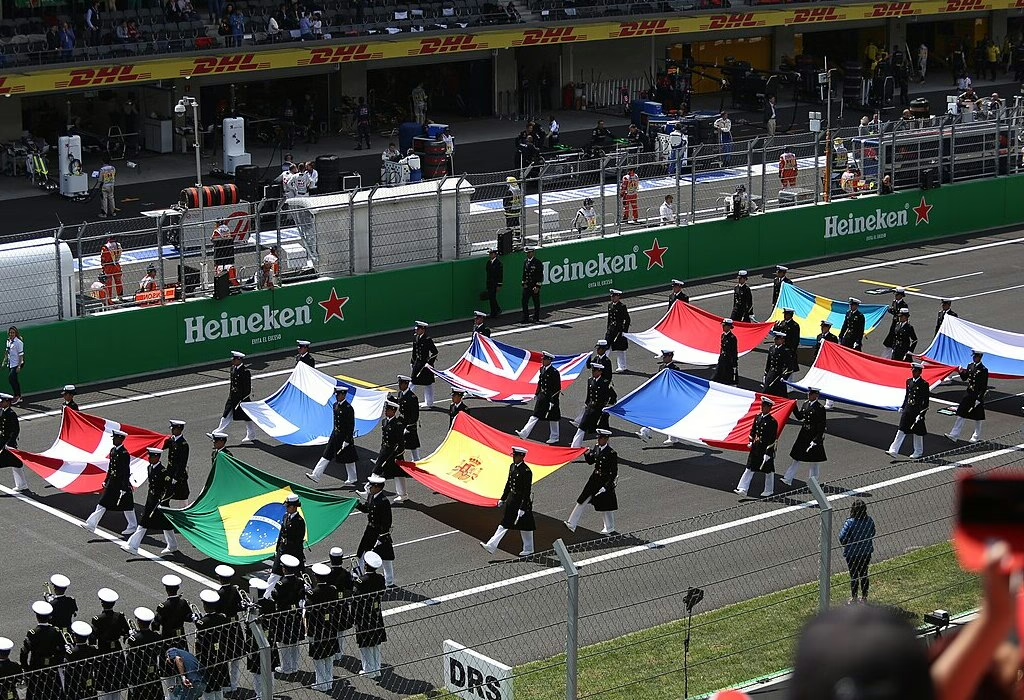
Books, cinema, light, and fireworks
For culture and arts, there are several important events in Mexico that attract visitors every year. The Feria Internacional del Libro de Guadalajara, known as FIL Guadalajara, is considered the most important book fair in the Spanish-speaking world. It runs from late November to early December and gathers authors, publishers, and readers from many countries. For people who love literature, this fair is reason enough to travel to Mexico.
In Mexico City, the Feria Internacional del Libro Infantil y Juvenil (FILIJ) focuses on children’s and young adult literature. It offers activities, readings, and exhibitions for families and schools. For cinema fans, the Festival de Cine Todos Santos in Baja California Sur shows films that highlight Latin American culture and the area’s lifestyle. The town of Todos Santos has a relaxed atmosphere and is also known for art galleries and surfing nearby.
Light and fire also appear in several fairs in Mexico. Brilla Fest in Atlixco is a light festival with illuminated figures, often connected to Christmas themes. Luztopía in Monterrey is another big light festival where families walk among giant lanterns and figures. PyroFest in Tequesquitengo focuses on fireworks and pyrotechnic shows, with the lake as a scenic background. These events are ideal for travelers who enjoy photos, night walks, and visual experiences. Many of them can be combined with day trips to nearby attractions like pyramids, colonial centers, or natural parks.
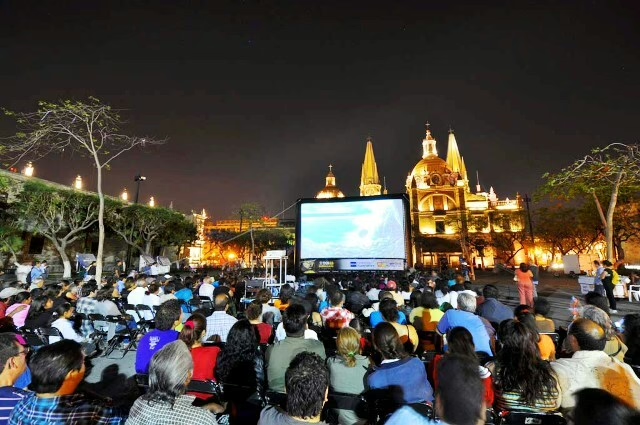
Mexico City and central region: what is there to do in Mexico City in this season?
Mexico City and its surroundings have so many events that you could almost spend the whole autumn here and still not see everything. For people asking what is there to do in Mexico City around October and November, the list is long.
In the city itself you have:
• Desfile Día de Muertos, the big Day of the Dead parade.
• Formula 1 Gran Premio de México.
• Corona Capital music festival.
• Festival Internacional del Libro Infantil y Juvenil (FILIJ).
• Festival Multicultural de Globos de Cantolla, where paper balloons rise to the sky.
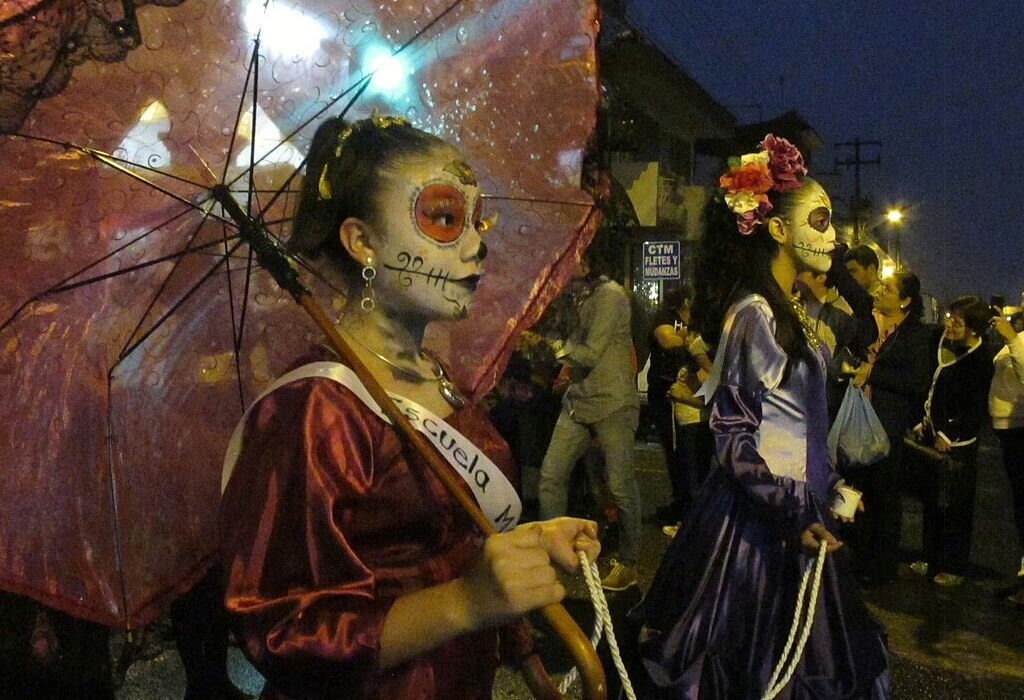
Near the city, in the State of Mexico and neighboring states, you can find:
• Festival de las Almas in Valle de Bravo.
• Feria del Alfeñique in Toluca.
• Feria Tlaxcala in Tlaxcala city.
• Festival Cultural de Calaveras in Aguascalientes (a bit farther, but reachable within a longer trip).
• Festival de Tradiciones de Vida y Muerte in Playa del Carmen as an extension of a longer holiday from Mexico City to the Caribbean.
In addition to these big events, the region is full of local festivities and local festivals. Many neighborhoods and small towns organize fiestas patronales (patronal festival), where they honor their local saint with a mass, a procession, music, and food. One good example is the annual fiesta in San Jerónimo, in the borough of Magdalena Contreras in Mexico City. This celebration may last only a few hours, but it feels special: neighbors decorate the streets, the church is full, food stands appear, and a small fair with games and rides may open. For visitors, it is a chance to see a side of the city that normal tours do not show.
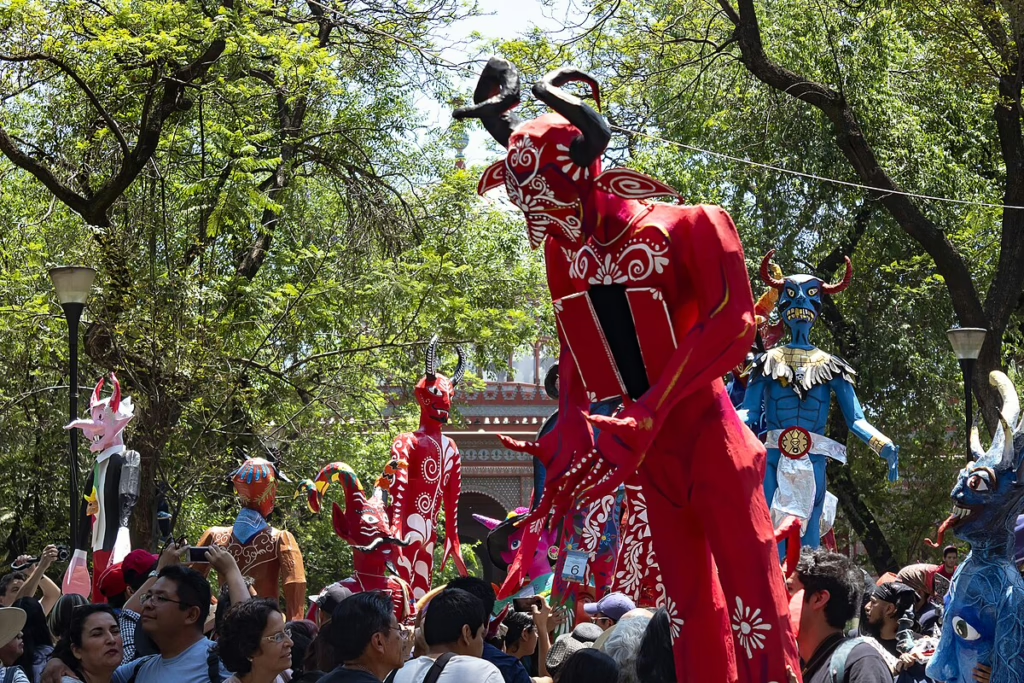
Carnivals in Mexico City and carnivals near Mexico City
When people hear the word carnival in Mexico, they often think about coastal cities like Veracruz or Mazatlán. But there are many carnivals in Mexico City and in nearby states as well. Some are small, but they are very colorful and authentic. In the highlands of central Mexico, one of the strong carnival traditions is the dance of the chinelos. Chinelos are dancers who wear long colorful robes, masks, and tall hats.
Their movement and music are very cheerful. Towns in Morelos such as Yautepec, Tepoztlan, and Tlayacapan are famous for their chinelo carnivals, but similar groups appear in many other towns. Around Mexico City, a guide to carnivals near Mexico City would include places in Morelos, Puebla, and the State of Mexico where these dances take place. Carnivals in Mexico City itself can appear in some boroughs and neighborhoods, often connected to local parishes.
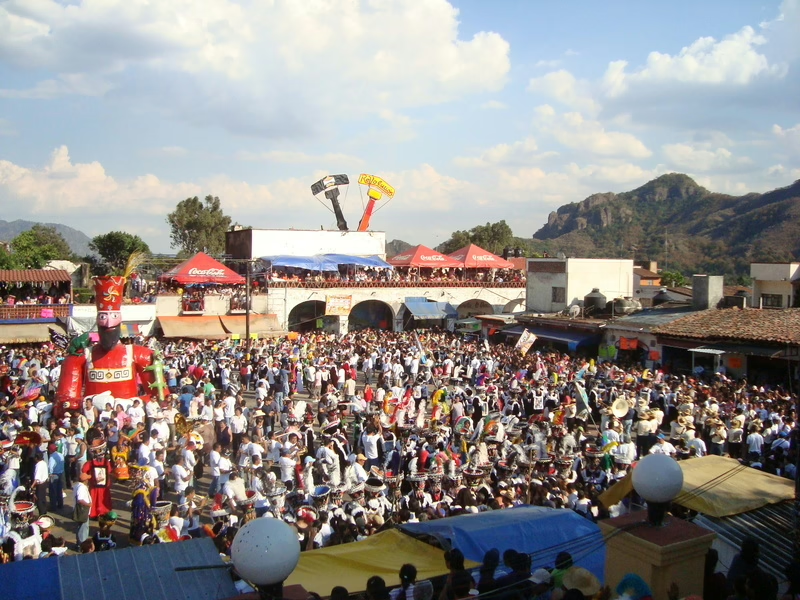
These events are more local festivals than big international shows. There may not be many foreign tourists, but that is part of the charm. Visitors who join a small group tour can walk with locals, taste snacks like quesadillas or tlacoyos, and dance in the street. In a way, this side of cultural travel can be even more special than attending a huge concert.
For a travel company, this means that fairs in Mexico should not only include famous names such as Corona Capital or FIL Guadalajara. It is also possible to design small, flexible tours around regional carnivals or fiestas patronales. For example, a half-day trip from Mexico City to a chinelo carnival in Morelos, or a weekend that includes a fiesta in a mountain town plus a visit to nearby attractions.
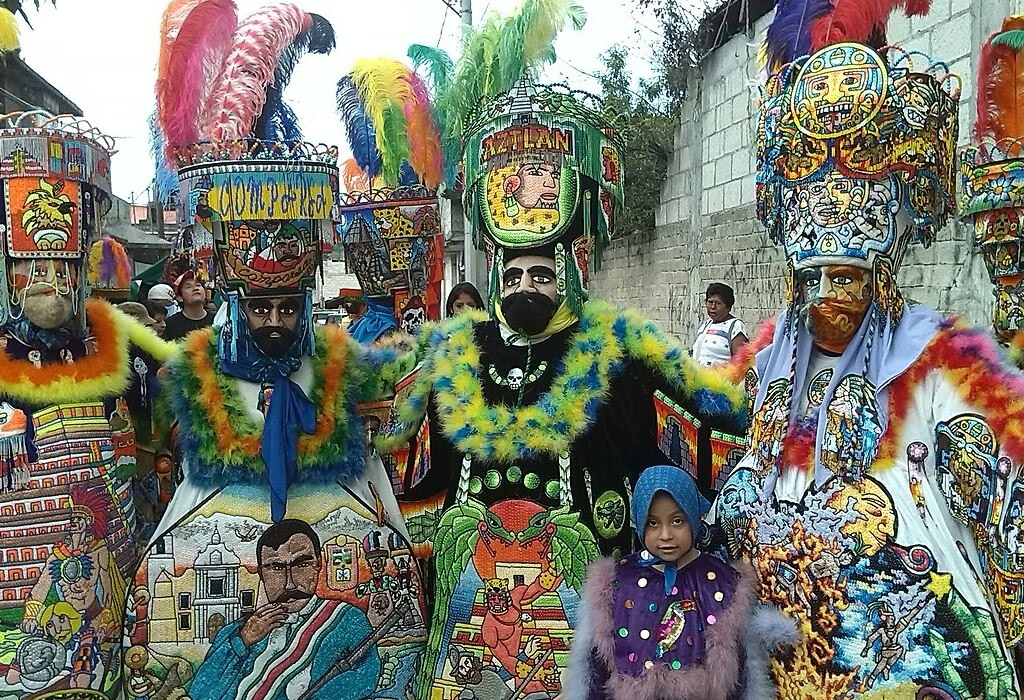
Guadalajara and western Mexico: events in Guadalajara Mexico and beyond
Guadalajara is a strong cultural center, so it is no surprise that there are many events in Guadalajara Mexico during the autumn months. First, there are the Fiestas de Octubre, a long fair that normally starts in early October and continues into early November. It includes concerts, rides, cultural shows, and exhibitions. Families from the whole region visit this fair.
Calaverandia, the Day of the Dead theme park, adds a more modern experience. It uses multimedia technology, shows, and decorations to create a night walk through skulls and altars. This is a very popular event, especially for young people and families. Not far away, in Aguascalientes, the Festival Cultural de Calaveras also offers a wide program of Day of the Dead activities. Travelers can combine Guadalajara and Aguascalientes in one trip, connecting two different styles of celebration.
A bit later in the season, the Guadalajara International Book Fair (FIL Guadalajara) becomes the main attraction of the city. Hotels fill with visitors from around the world. If you love books, this is one of the most important events in Mexico to plan around. Western Mexico also has strong sport and cultural events on the coast. Mazatlán has the Gran Maratón Pacífico, and Puerto Vallarta offers both the Festival Gourmet Internacional and the Torneo Internacional de Pesca de Marlín y Atún in nearby waters. Together, these fairs in Mexico build a strong appeal for travelers who like food, sport, and culture by the sea.
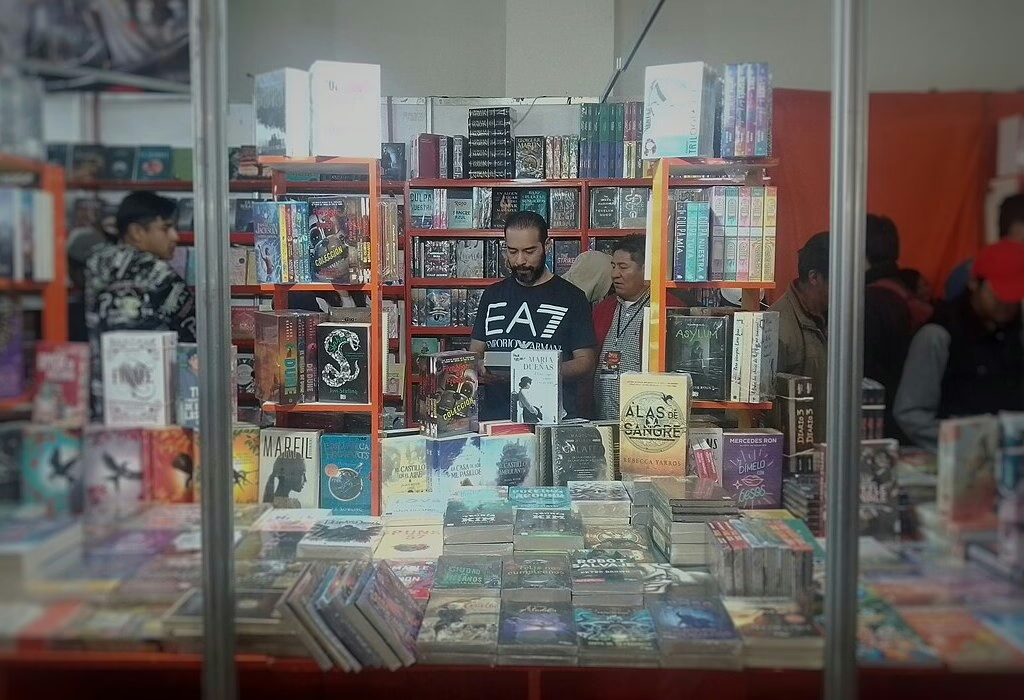
Gulf, Caribbean, and south: fairs in Mexico with sea and jungle
On the Gulf and Caribbean coasts and in the south of the country, there are many events that mix sea, jungle, and culture. In Playa del Carmen and the Riviera Maya you already have the Festival de Tradiciones de Vida y Muerte in Xcaret and the Riviera Maya Jazz Festival. These two events can be combined easily in a one-week trip at the end of November. During the day you can visit cenotes, ruins such as Tulum or Cobá, and the beach. In the evening you go to the festival shows.
Cozumel hosts Ironman Cozumel, a big triathlon that draws athletes and their families. People often stay on the island for a full week, so it is possible to plan snorkeling, diving, or boat trips around the sport event. In Villahermosa, the Festival del Chocolate is a nice excuse to learn about cocoa plantations and the relation between chocolate and pre-Hispanic cultures. Travelers can add visits to archaeological sites in Tabasco or Chiapas.
Moving back to the center-south, in Zacatlán you have fairs based on cider and cheese, while in Tehuacán you can explore the Festival Cultural Mole de Caderas and the Festival del Camarón in San Felipe if you travel further north along the Baja peninsula. Each of these local festivals gives you a different flavor of Mexico.
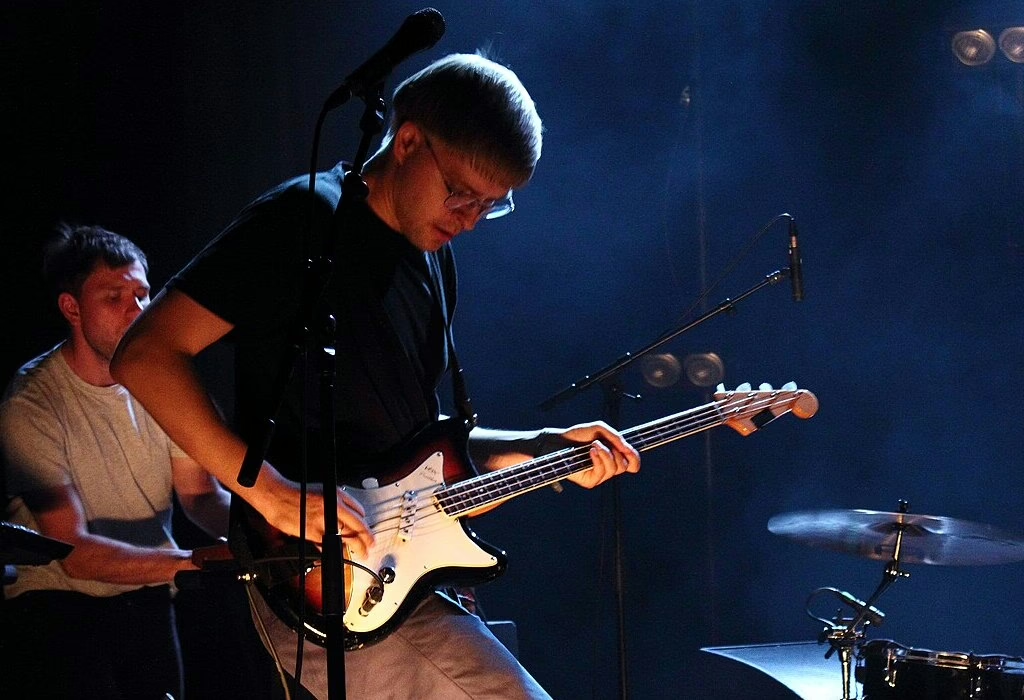
How to use this guide to plan your trip
With so many fairs in Mexico, you might feel a bit lost at first. Here are some simple ideas to use this guide when planning your journey.
• If you want a deep cultural experience around Day of the Dead, think about a route that connects Mexico City (parade and museums), Toluca (Feria del Alfeñique), Valle de Bravo (Festival de las Almas), and maybe a trip to Chignahuapan or Zacatlán. This gives you a mix of big city events in Mexico and smaller local festivals.
• If you love music and food, consider a western route in November: Guadalajara for Fiestas de Octubre and Calaverandia, Aguascalientes for the Festival Cultural de Calaveras, then Puerto Vallarta for the Festival Gourmet Internacional, and San Miguel de Allende for the Festival Internacional de Jazz y Blues. This path includes several popular events in Mexico with strong tastes and sounds.

• For beach and sports, the combination of Puerto Escondido (Fiestas de Noviembre and sailfish tournament), Mazatlán (Gran Maratón Pacífico), Cozumel (Ironman), and the Riviera Maya Jazz Festival can work very well. You can plan your dates around one of the races or festivals and then add days to relax on the beach.
• If your priority is books and culture, focus on events in Guadalajara Mexico and in Mexico City: FIL Guadalajara, FILIJ, Festival Internacional Santa Lucía in Monterrey if you want to extend north, and the various museums and concerts in the capital.
At the same time, try not to forget the smaller local festivities that take place in neighborhoods, villages, and small towns. Ask local guides about fiestas patronales, small carnivals, and fairs dedicated to cheese, fruit, or other products. Many of these celebrations are not huge, but they feel very personal and can create strong memories.
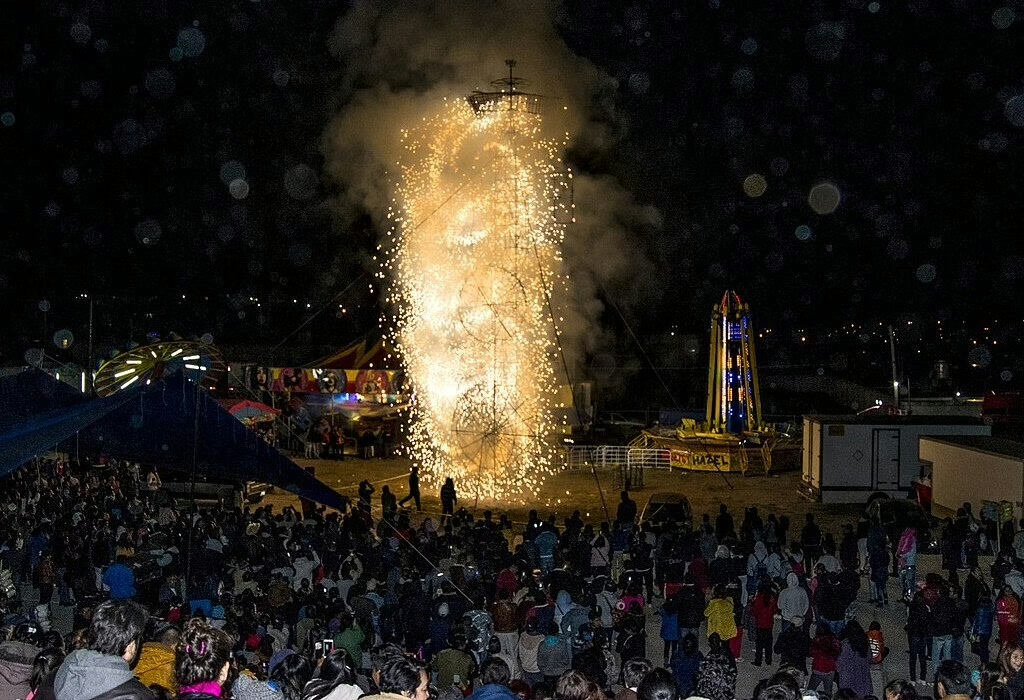
Conclusione
Mexico is not only a country of beaches and ruins. It is also a country of fairs, parades, carnivals, and festivals. From the big famous events in Mexico City or Guadalajara to the modest local festivals in small towns, there is always something happening. By planning your trip around fairs in Mexico, you can see how people celebrate life, honor their dead, enjoy music, and share food.
You can attend international concerts like Corona Capital, walk among hot-air balloons in León, taste chocolate in Tabasco, watch jazz under the stars in Playa del Carmen, or join a small procession in a neighborhood like San Jerónimo in Magdalena Contreras. For travelers, for tour operators, and for anyone curious about Mexican culture, understanding these events in Mexico opens a door to a more complete and human experience. Instead of seeing only monuments and landscapes, you see how people live, celebrate, and connect with each other. That is the real power of fairs in Mexico and of the many local festivities that make the country feel alive all year long.
